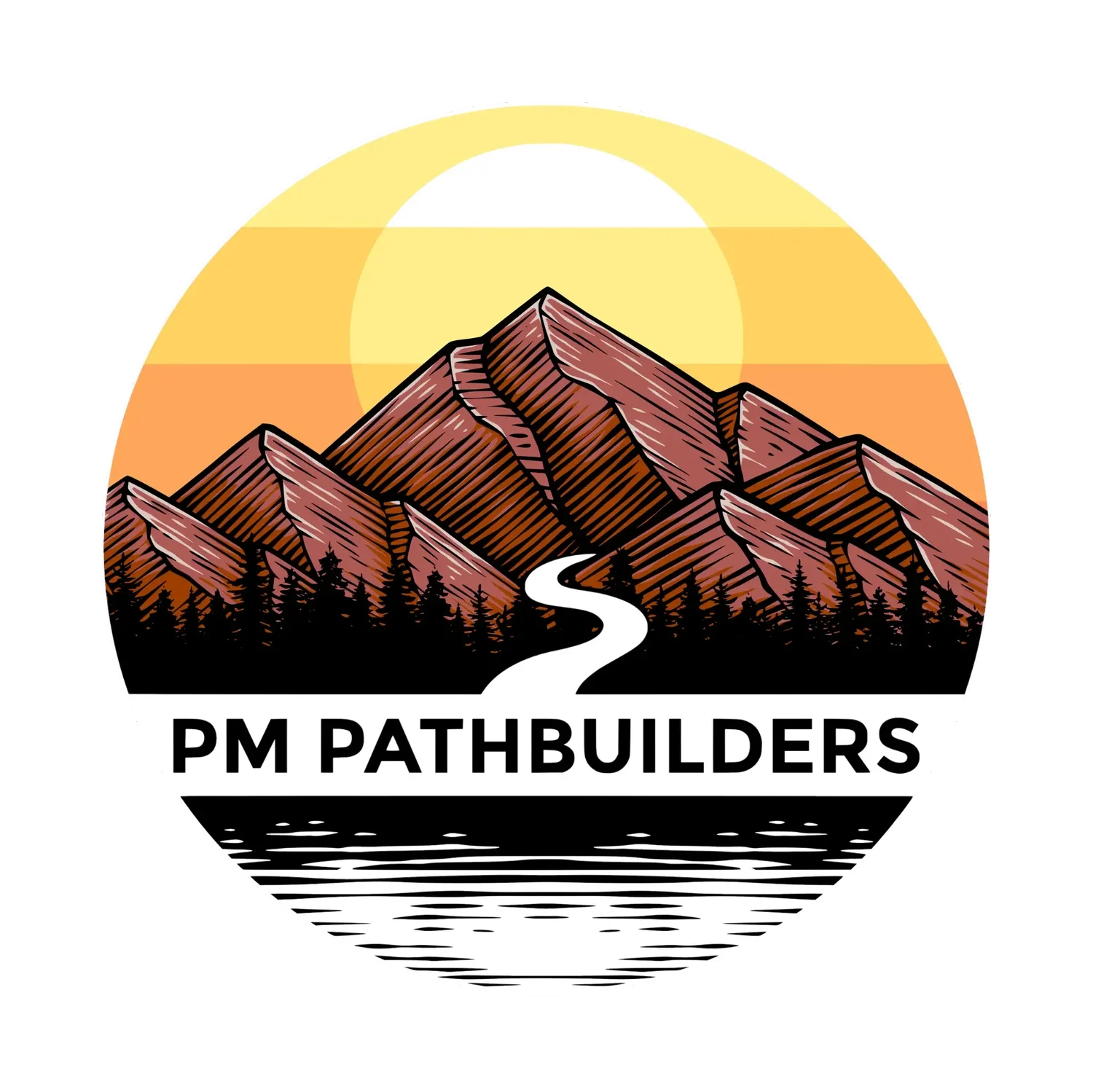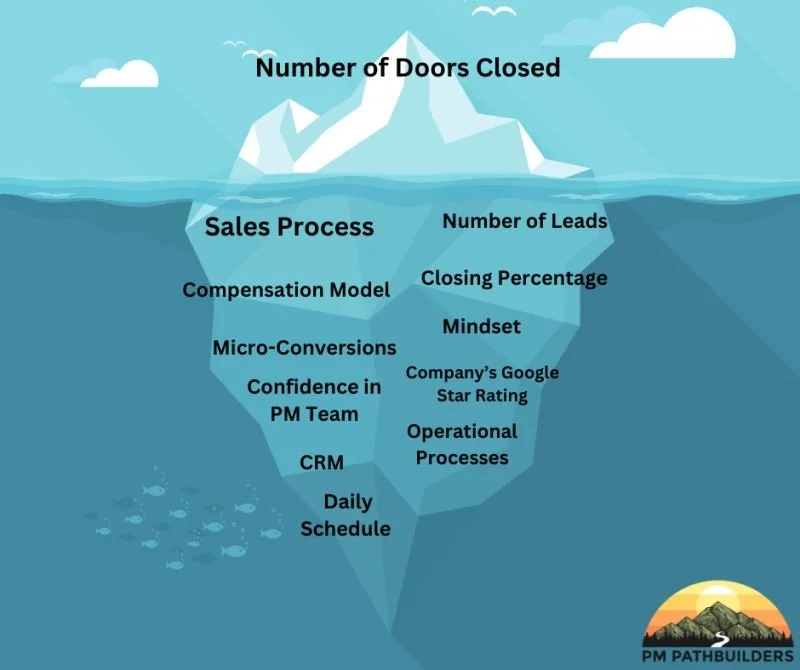Building Your Sales Lead Pipeline for Modern Processes
In property management, it's easy to focus on how many doors you’ve closed. But if you're not tracking your lead pipeline, you’re missing the bigger picture. Your sales performance depends less on total deals signed and more on how well you’re managing the journey from prospect to client. By improving your sales pipeline—especially how you handle follow-ups, conversion rates, and client readiness—you gain real insight into your business health. In this guide, we’ll break down why doors closed is a misleading metric, what your pipeline is hiding, and how to make smarter decisions that improve growth.
Table of Contents
Why Doors Closed Is a Vanity Metric
In property management, “doors closed” gets a lot of attention. It’s often used to measure growth and BDM performance—but it’s just the surface. Think of it like an iceberg: the real story is hidden underneath. High door counts may look impressive, but they don’t show what’s being lost in the process.
Focusing only on the number of deals closed ignores the leads that never converted, the opportunities left behind, and the inefficiencies draining your time and money. That’s where your sales pipeline comes in.
What Closing Percentage Reveals
Your closing percentage is one of the most important metrics in your sales leads pipeline. It measures how many leads actually sign a contract—not just how many doors you closed.
Example:
BDM A: 100 doors closed from 1,000 leads → 10% close rate
BDM B: 50 doors closed from 200 leads → 25% close rate
BDM A might look more successful on the surface, but BDM B is operating far more efficiently. A strong sales pipeline doesn’t just collect names. It moves the right people through the right process with less waste.
How to Evaluate Your Sales Leads Pipeline
Ask yourself:
How many leads are coming in each month?
What percentage are converting to clients?
Where do prospects fall off?
How many follow-ups are skipped?
By answering these, you’re no longer guessing. You’re using the data inside your leads pipeline to drive better decisions.
We help PM teams do this inside LeadSimple by setting up clear workflows, automating follow-up reminders, and building dashboards that reveal the real performance behind the doors closed number.
Improving the Sales Pipeline With Data
Improving the sales pipeline doesn’t mean chasing more leads—it means tightening the process. Look at where people are dropping off. Is the lead waiting too long for a callback? Did they receive unclear information? Was the proposal rushed?
When you collect and analyze these patterns, you’ll see where your pipeline is leaking. Fixing these gaps results in more conversions without needing to generate more leads.
Key Metrics to Track in Your Leads Pipeline
To understand the health of your leads pipeline, here are the key metrics to monitor regularly:
Lead Response Time – How long does it take to follow up after a new lead comes in?
Follow-Up Completion Rate – Are BDMs completing scheduled touches or letting leads go cold?
Close Rate by Source – Which lead sources convert the best?
Pipeline Stage Conversion Rates – Are leads getting stuck in the “proposal sent” phase?
Average Time to Close – How long does it take for a lead to move from contact to signed?
These metrics will help you spot performance trends and optimize your sales leads pipeline step by step.
How to Structure a Leads Pipeline That Works
A well-designed sales pipeline reflects how people actually move through the buying process. Don’t overcomplicate it.
Here’s a simple structure we often implement for PM companies:
New Lead
Initial Contact Attempt
Discovery Call Scheduled
Discovery Completed
Proposal Sent
Follow-Up
Verbal Yes / Agreement Pending
Signed Client
Each stage should include clear tasks, deadlines, and triggers. Automation helps, but only when it aligns with how your BDMs already work.
Common Leads Pipeline Mistakes
Here’s where most pipelines go wrong:
No clear stages – If your CRM only has “New Lead” and “Closed,” you’re flying blind.
Poor task accountability – Tasks go unassigned or ignored.
No process for cold leads – Just because they didn’t convert now doesn’t mean they won’t later.
Lack of visibility – Leadership doesn’t know how many leads are stuck or stale.
Solving these issues helps you create a leads pipeline that supports real growth instead of just looking busy.
Best Tools for Managing Your Pipeline
You don’t need 10 platforms. You need the right one that your team will actually use. For property management companies, these tools are most effective:
LeadSimple – Tailored for property managers; built-in automation and clear pipeline views.
Aptly - Property management teams can convert, support, and delight customers at every stage of their journey.
HubSpot – Great if you want marketing features with your CRM.
Trello or ClickUp – Visual, flexible, and good for smaller teams.
Google Sheets – Yes, even a good spreadsheet can outperform a complex CRM no one updates.
What matters most is consistency—use one system and stick with it.
Training Your Team to Use the Sales Leads Pipeline
Even the best-designed pipeline will fail if the team isn’t trained to use it.
Focus your training on:
What happens at each stage
When to move leads forward
How to track notes and tasks properly
What success looks like (e.g. 3 touchpoints before proposal)
Don’t assume your BDMs know what to do. Build in training, review the pipeline weekly, and provide support so the process sticks.
FAQs
-
A lead pipeline is the process that tracks prospects from initial contact to becoming a signed client.
-
It helps your team focus, improve close rates, and avoid losing leads due to missed follow-ups or unclear workflows.
-
Start by mapping out the stages, assigning tasks, tracking key metrics, and holding regular reviews with your team.
-
LeadSimple is purpose-built for property managers, but platforms like HubSpot or ClickUp also work depending on your needs.
-
Track lead response times, stage conversion rates, overall close percentage, and the number of leads that go cold or stall.
Final Thoughts
The number of doors you close is just the tip of the iceberg. The real success lies in how well you manage every lead, every conversation, and every opportunity. A defined, working leads pipeline helps you do that.
If you’re ready to take control of your growth and stop guessing what’s working, your pipeline is the first place to look.
Let’s Fix Your Pipeline Together
We help property management teams like yours stop wasting leads and start closing smarter. Book a free 15-minute strategy call to review your current pipeline and walk away with a clear next step.

